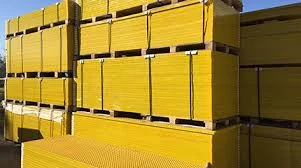
-
 Afrikaans
Afrikaans -
 Albanian
Albanian -
 Amharic
Amharic -
 Arabic
Arabic -
 Armenian
Armenian -
 Azerbaijani
Azerbaijani -
 Basque
Basque -
 Belarusian
Belarusian -
 Bengali
Bengali -
 Bosnian
Bosnian -
 Bulgarian
Bulgarian -
 Catalan
Catalan -
 Cebuano
Cebuano -
 China
China -
 China (Taiwan)
China (Taiwan) -
 Corsican
Corsican -
 Croatian
Croatian -
 Czech
Czech -
 Danish
Danish -
 Dutch
Dutch -
 English
English -
 Esperanto
Esperanto -
 Estonian
Estonian -
 Finnish
Finnish -
 French
French -
 Frisian
Frisian -
 Galician
Galician -
 Georgian
Georgian -
 German
German -
 Greek
Greek -
 Gujarati
Gujarati -
 Haitian Creole
Haitian Creole -
 hausa
hausa -
 hawaiian
hawaiian -
 Hebrew
Hebrew -
 Hindi
Hindi -
 Miao
Miao -
 Hungarian
Hungarian -
 Icelandic
Icelandic -
 igbo
igbo -
 Indonesian
Indonesian -
 irish
irish -
 Italian
Italian -
 Japanese
Japanese -
 Javanese
Javanese -
 Kannada
Kannada -
 kazakh
kazakh -
 Khmer
Khmer -
 Rwandese
Rwandese -
 Korean
Korean -
 Kurdish
Kurdish -
 Kyrgyz
Kyrgyz -
 Lao
Lao -
 Latin
Latin -
 Latvian
Latvian -
 Lithuanian
Lithuanian -
 Luxembourgish
Luxembourgish -
 Macedonian
Macedonian -
 Malgashi
Malgashi -
 Malay
Malay -
 Malayalam
Malayalam -
 Maltese
Maltese -
 Maori
Maori -
 Marathi
Marathi -
 Mongolian
Mongolian -
 Myanmar
Myanmar -
 Nepali
Nepali -
 Norwegian
Norwegian -
 Norwegian
Norwegian -
 Occitan
Occitan -
 Pashto
Pashto -
 Persian
Persian -
 Polish
Polish -
 Portuguese
Portuguese -
 Punjabi
Punjabi -
 Romanian
Romanian -
 Russian
Russian -
 Samoan
Samoan -
 Scottish Gaelic
Scottish Gaelic -
 Serbian
Serbian -
 Sesotho
Sesotho -
 Shona
Shona -
 Sindhi
Sindhi -
 Sinhala
Sinhala -
 Slovak
Slovak -
 Slovenian
Slovenian -
 Somali
Somali -
 Spanish
Spanish -
 Sundanese
Sundanese -
 Swahili
Swahili -
 Swedish
Swedish -
 Tagalog
Tagalog -
 Tajik
Tajik -
 Tamil
Tamil -
 Tatar
Tatar -
 Telugu
Telugu -
 Thai
Thai -
 Turkish
Turkish -
 Turkmen
Turkmen -
 Ukrainian
Ukrainian -
 Urdu
Urdu -
 Uighur
Uighur -
 Uzbek
Uzbek -
 Vietnamese
Vietnamese -
 Welsh
Welsh -
 Bantu
Bantu -
 Yiddish
Yiddish -
 Yoruba
Yoruba -
 Zulu
Zulu
grp piping system
Understanding GRP Piping Systems A Comprehensive Overview
Glass Reinforced Plastic (GRP) piping systems have garnered significant attention across various industries due to their unique properties and advantages over traditional materials like metal and concrete. GRP is a composite material made from a polymer matrix reinforced with glass fibers, resulting in a strong, lightweight, and corrosion-resistant product. This article delves into the fundamental aspects of GRP piping systems, including their composition, benefits, applications, and maintenance considerations.
Composition of GRP Piping Systems
GRP pipes are fabricated by combining glass fibers and a resin, typically unsaturated polyester or epoxy. The manufacturing process involves a technique known as filament winding or hand lay-up, which ensures that the glass fibers are properly aligned within the resin matrix. This alignment is crucial as it enhances the mechanical properties of the pipe, providing excellent tensile strength and impact resistance. The resulting structure is not only durable but also exhibits a smooth interior surface that minimizes friction and enhances flow efficiency.
Advantages of GRP Piping Systems
One of the most significant advantages of GRP piping systems is their resistance to corrosion. Traditional piping materials, particularly metals, are susceptible to rust and degradation when exposed to chemicals or harsh environmental conditions. In contrast, GRP pipes can withstand a wide range of corrosive substances, making them ideal for applications in chemical processing, wastewater management, and marine environments.
Another key benefit is their lightweight nature. GRP pipes are considerably lighter than their metal counterparts, which simplifies handling, transportation, and installation. This lightweight characteristic often results in lower labor costs and reduced infrastructure requirements, such as supports and foundations.
Additionally, GRP piping systems boast excellent thermal insulation properties. The material does not conduct heat as efficiently as metals, which assists in maintaining the temperature of the fluids transported, reducing energy costs associated with heating or cooling applications.
Applications of GRP Piping Systems
grp piping system

GRP piping systems find application in various sectors due to their versatility. In the water and wastewater industry, they are commonly used for transporting potable water, sewage, and industrial effluents. Their corrosion resistance ensures that they can handle aggressive fluids without risking leaks or structural failures.
In the chemical processing industry, GRP pipes are employed extensively in the transportation of acids, alkalis, and other volatile substances. The resistance to chemical attack ensures the longevity of the system and reduces the risk of environmental contamination.
Moreover, GRP piping is a preferred choice in the construction of offshore platforms and marine environments. The combination of lightweight and corrosion-resistant properties makes them suitable for applications involving seawater, brine, and other corrosive marine conditions.
Maintenance Considerations
While GRP piping systems require less maintenance than traditional materials, attention to certain aspects is essential to ensure their longevity. Regular inspections should be conducted to identify any signs of damage or mechanical failure. Although GRP is resistant to corrosion, external factors such as physical impact or extreme temperature fluctuations can compromise the integrity of the pipes.
It's also crucial to ensure proper installation techniques are followed. Skilled technicians should be engaged to install GRP systems, as improper installation can lead to issues such as misalignment, which may cause stress concentrations and eventual failure.
Conclusion
In conclusion, GRP piping systems represent a forward-thinking solution for a multitude of applications across diverse industries. Their unique combination of strength, lightweight, and corrosion resistance positions them as a preferred choice in modern infrastructure projects. As industries continue to evolve and demand advanced materials that offer sustainability and efficiency, GRP piping systems are likely to play an increasingly prominent role in shaping the future of piping solutions. Understanding the benefits and proper maintenance of GRP systems ensures that they operate effectively, providing reliable service for years to come.









